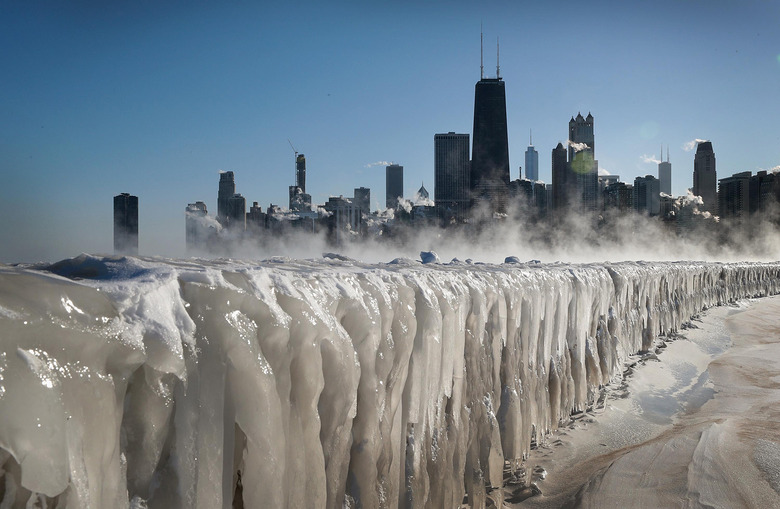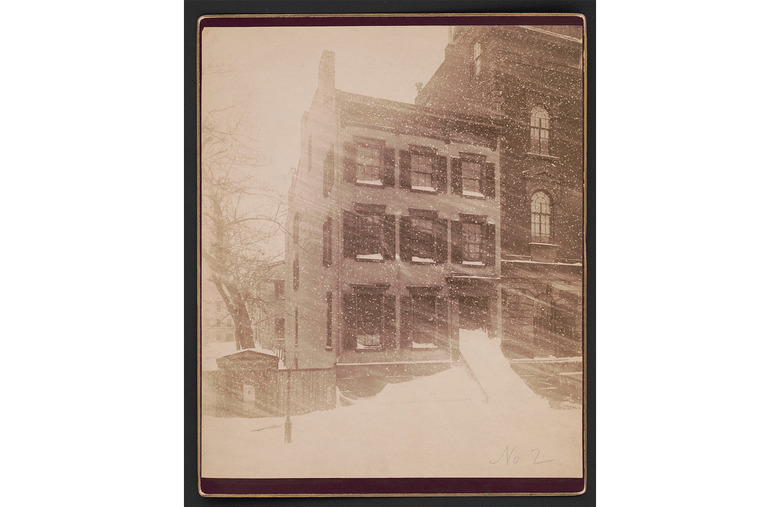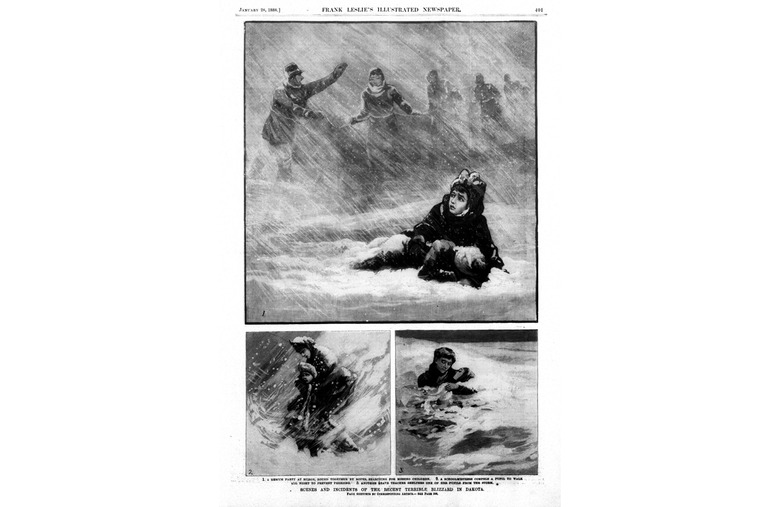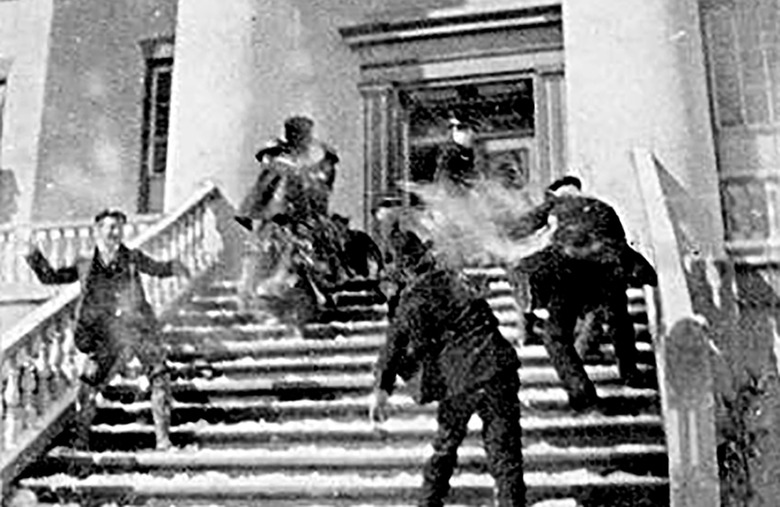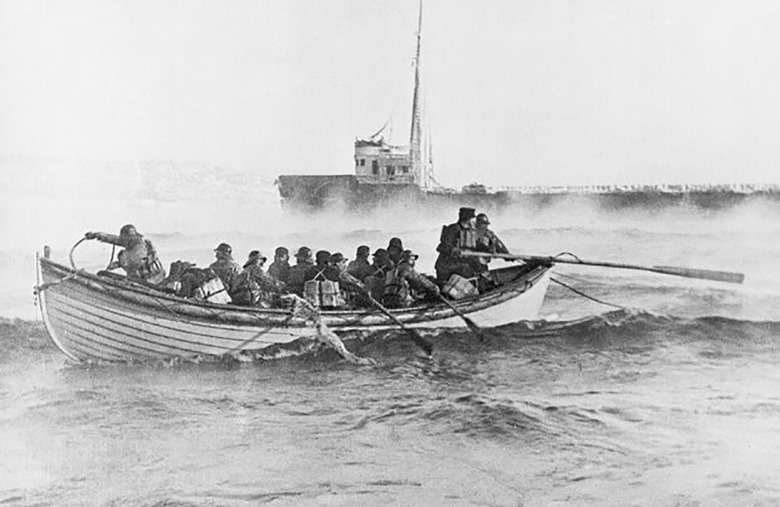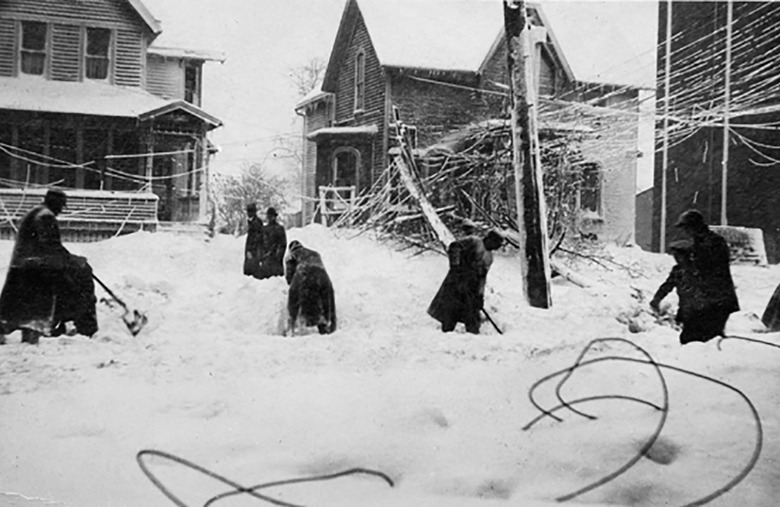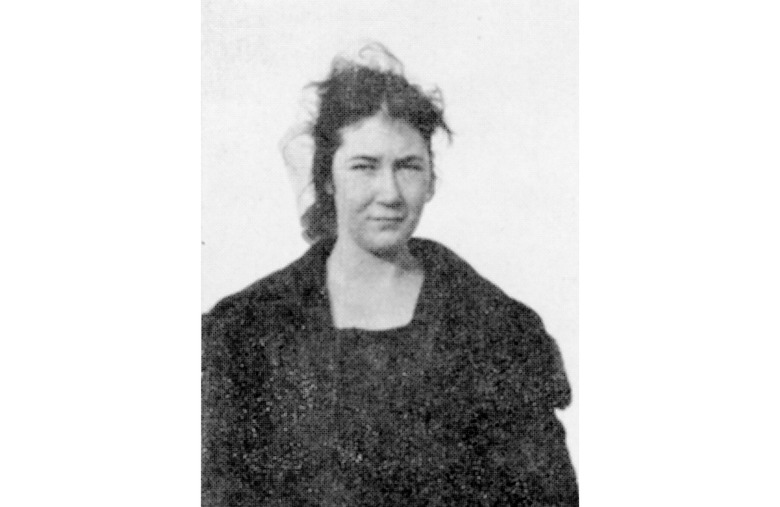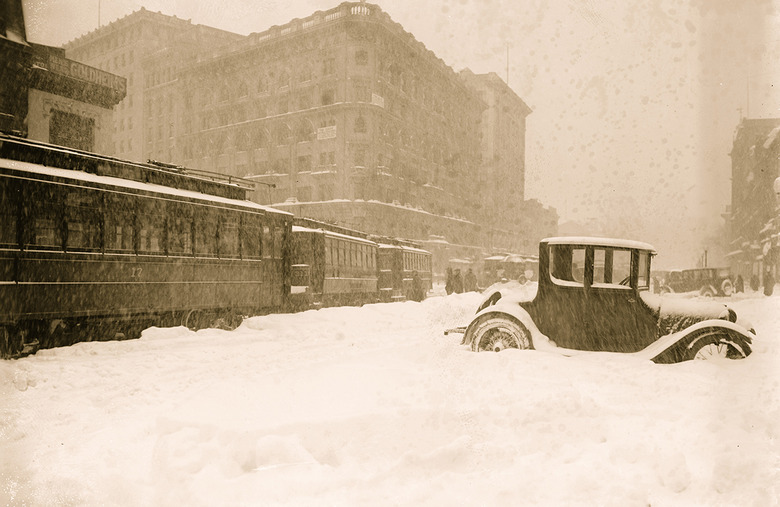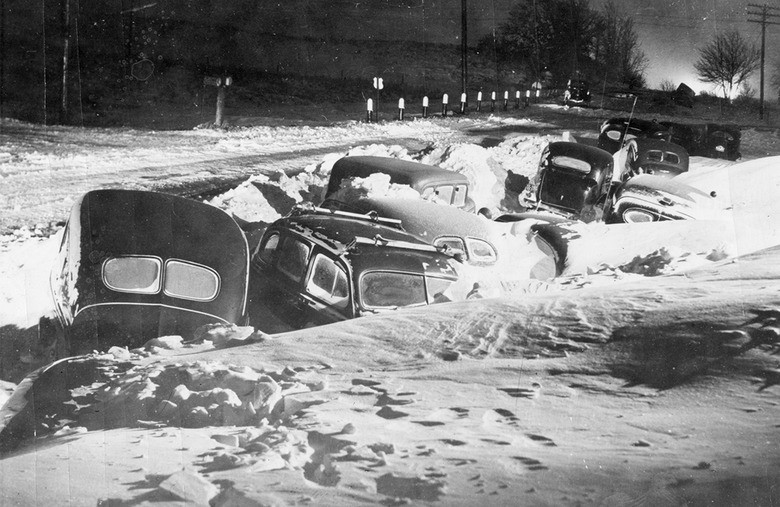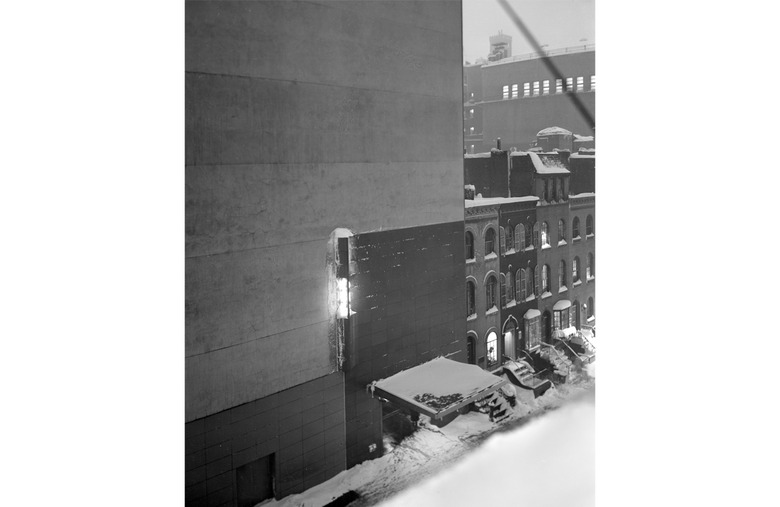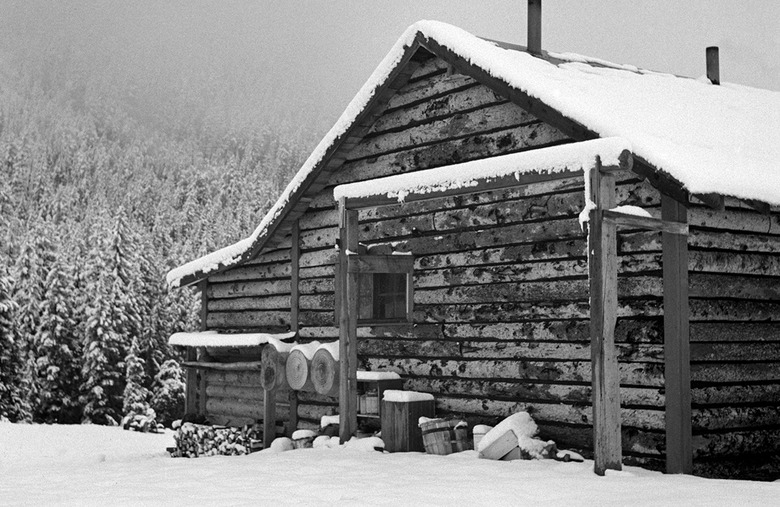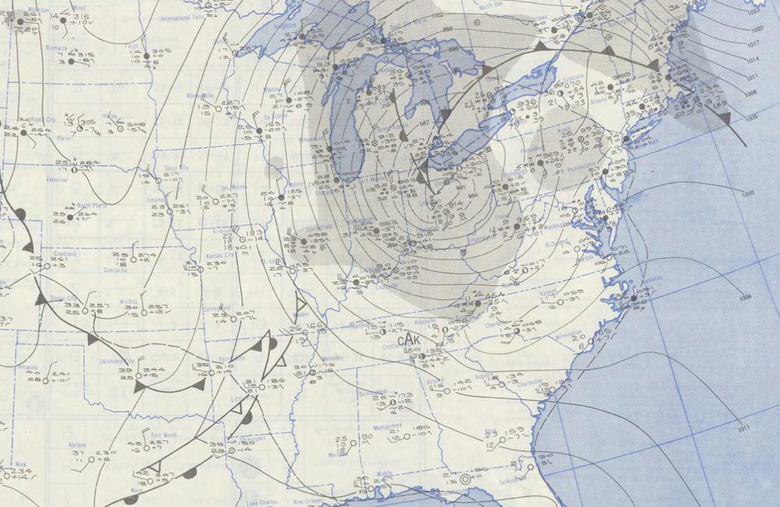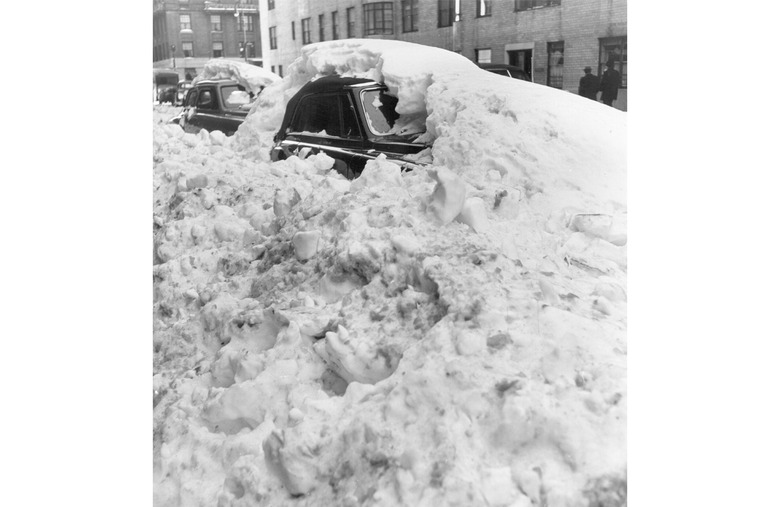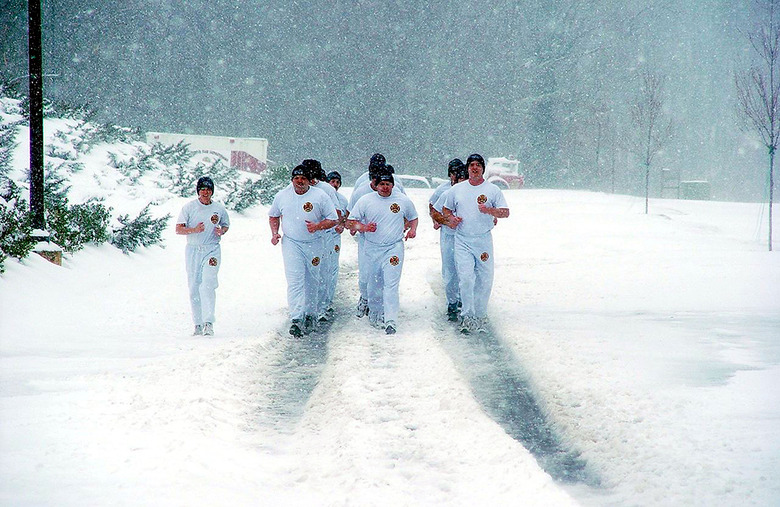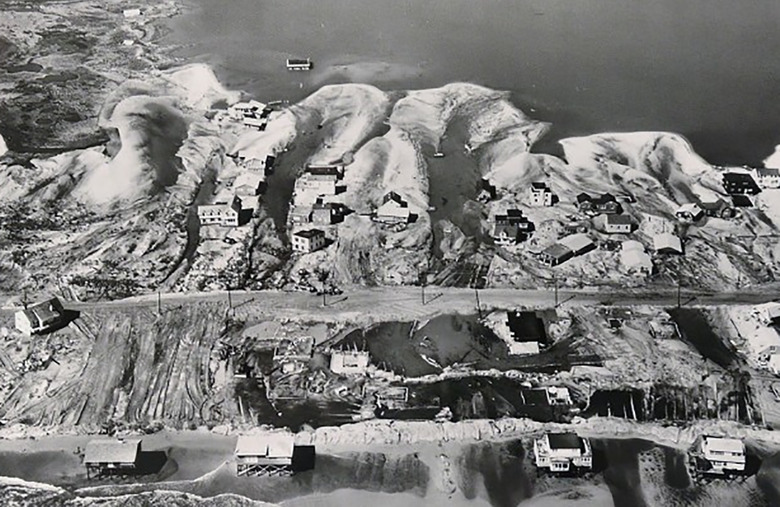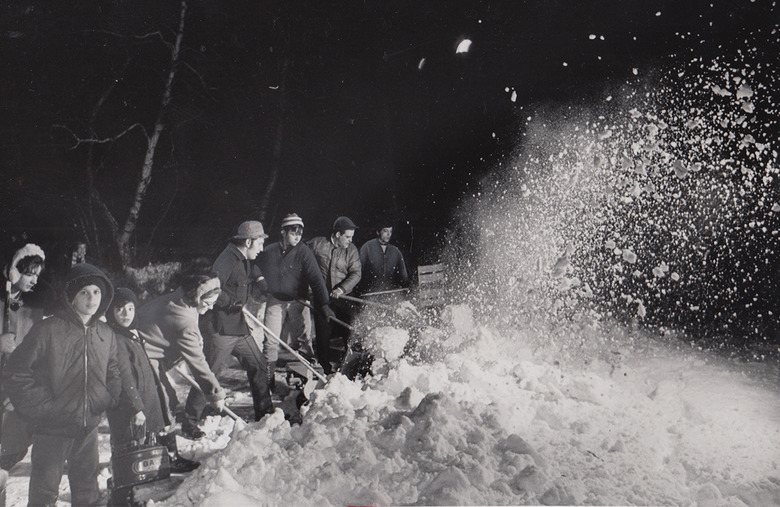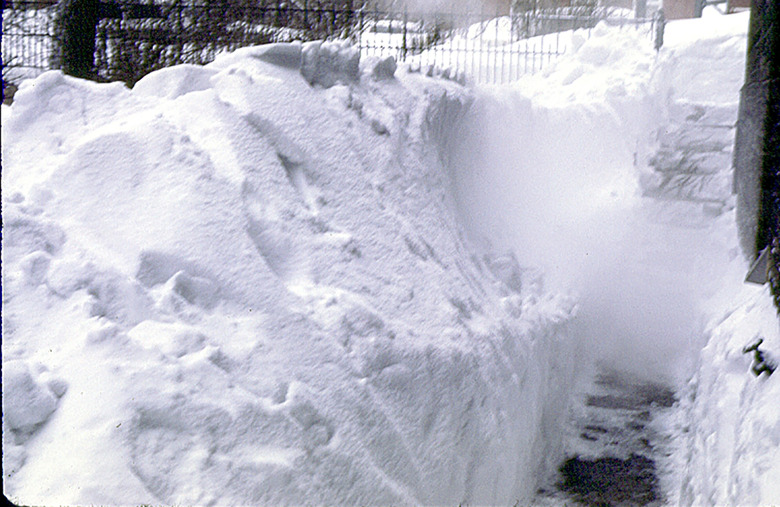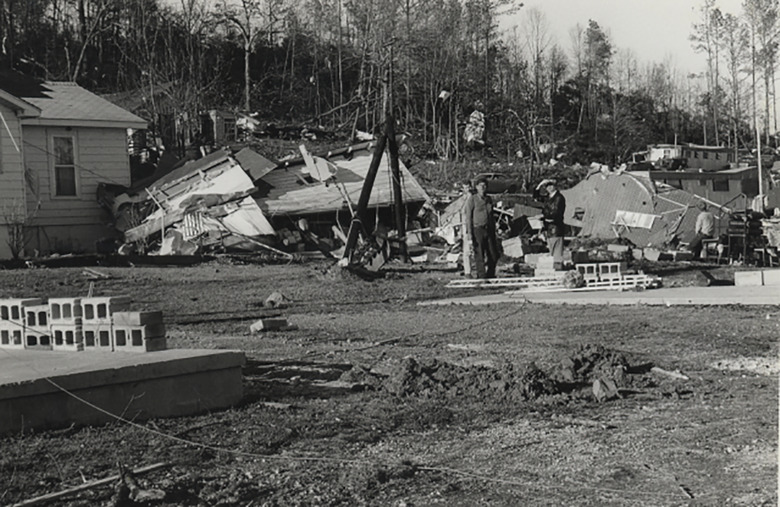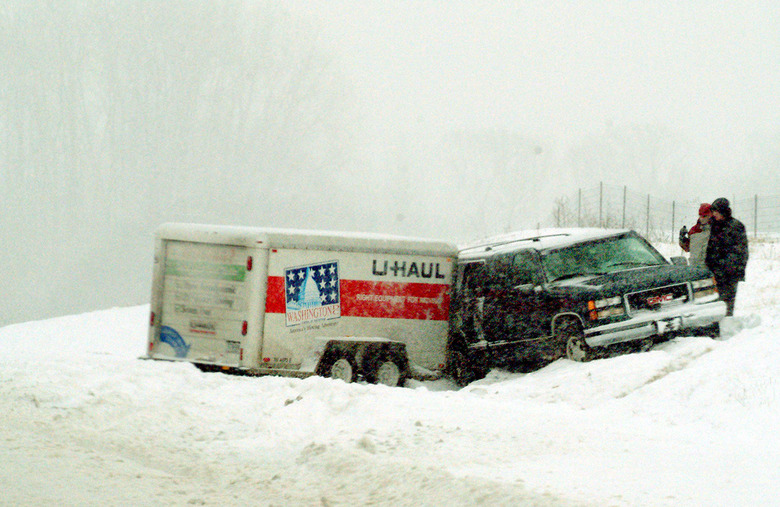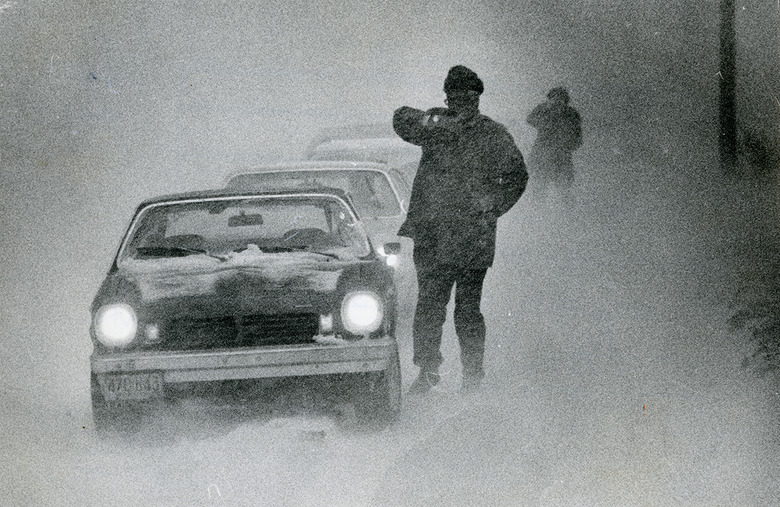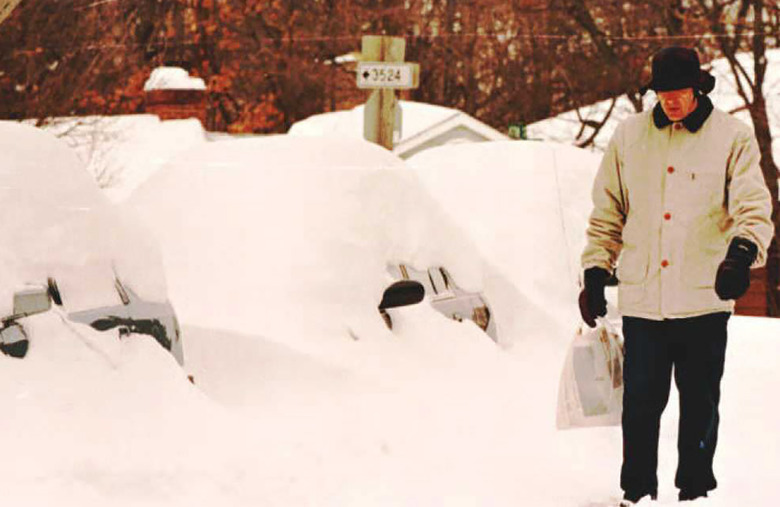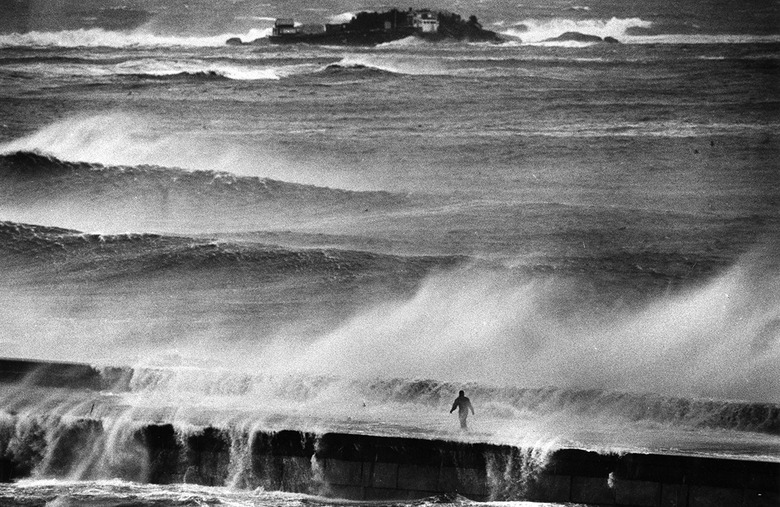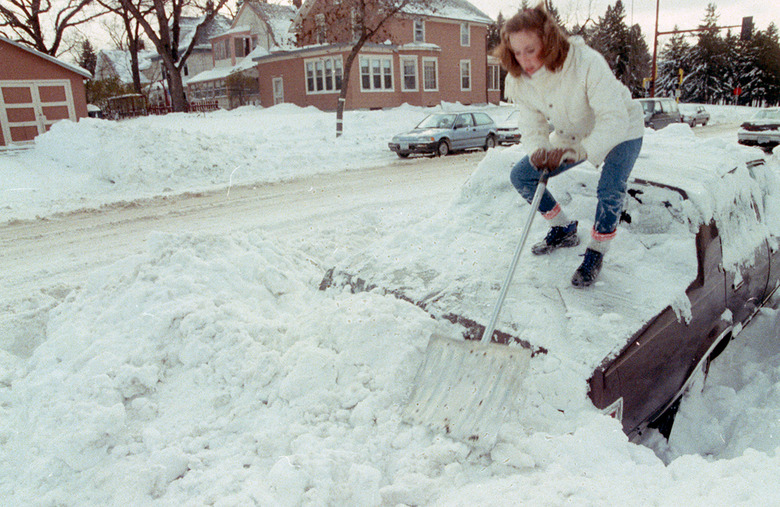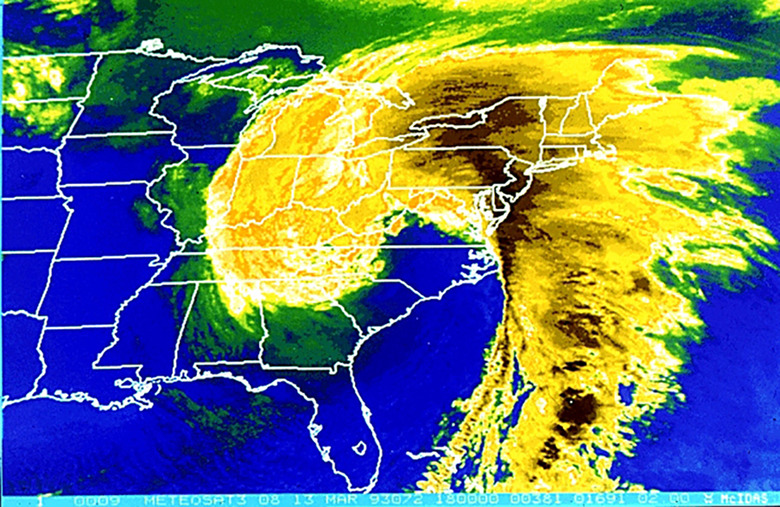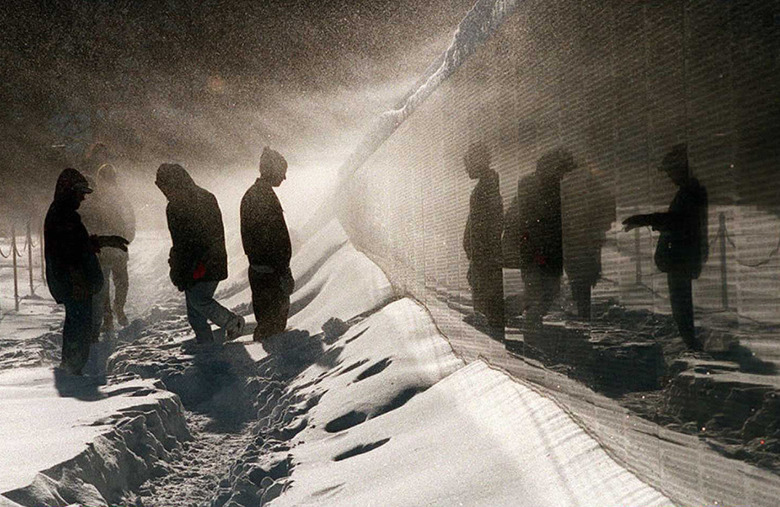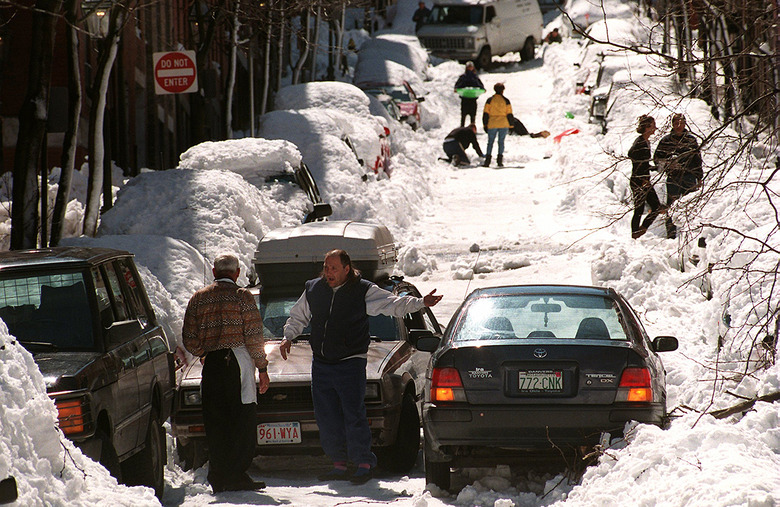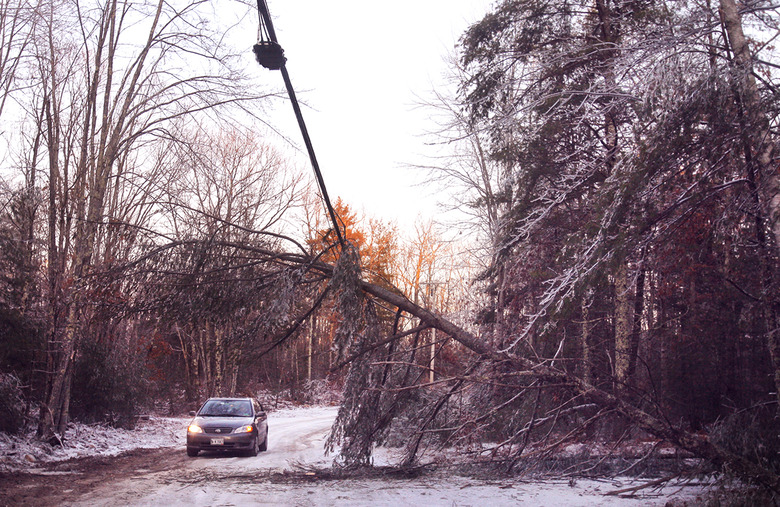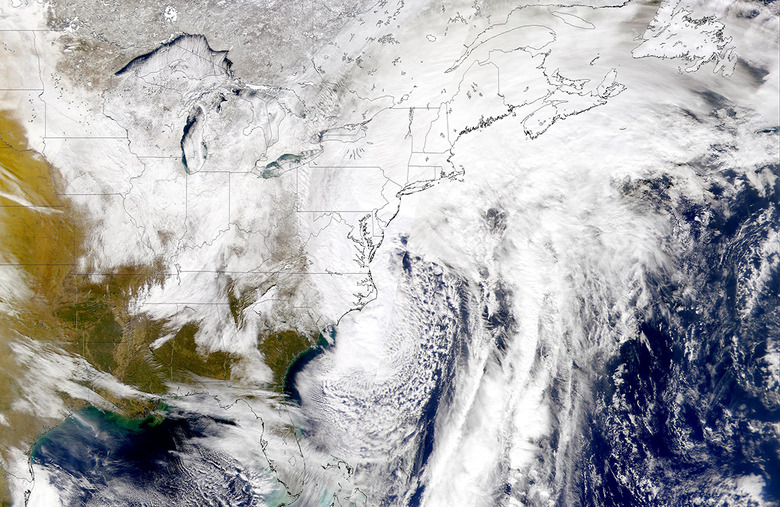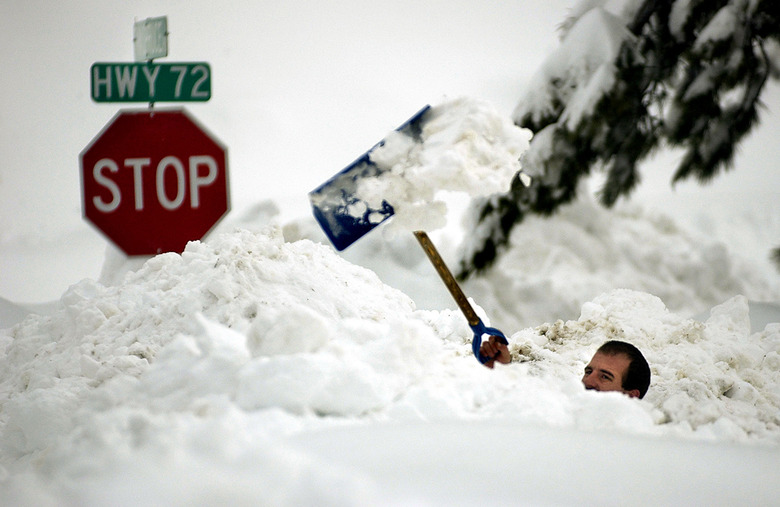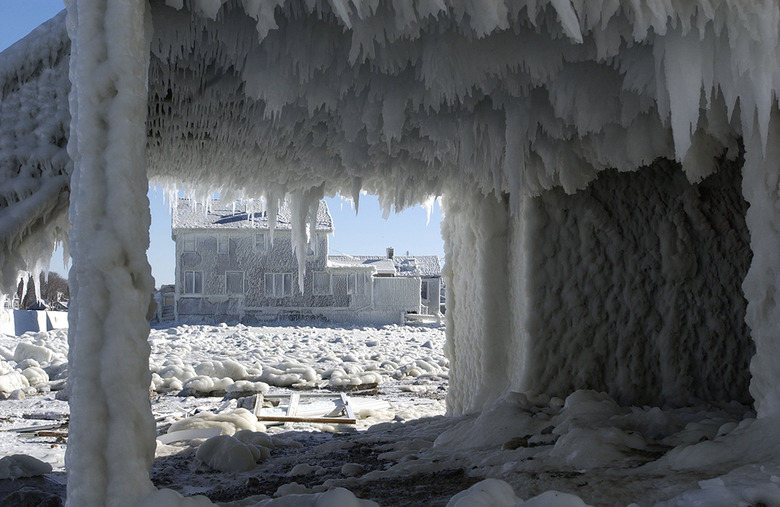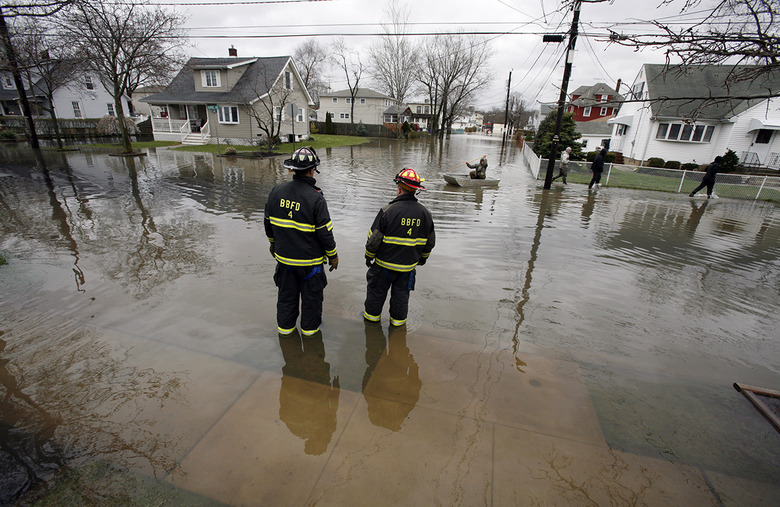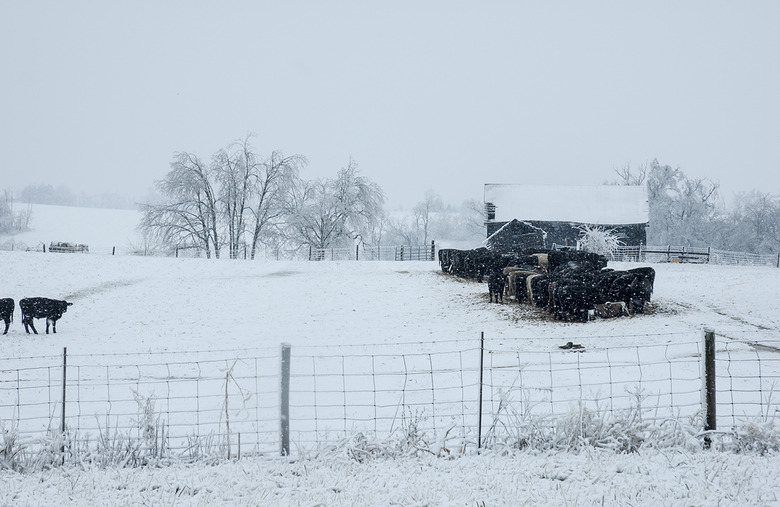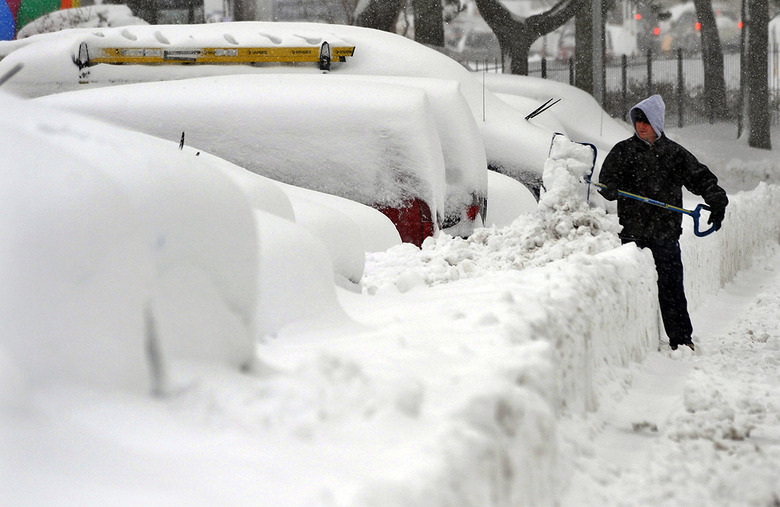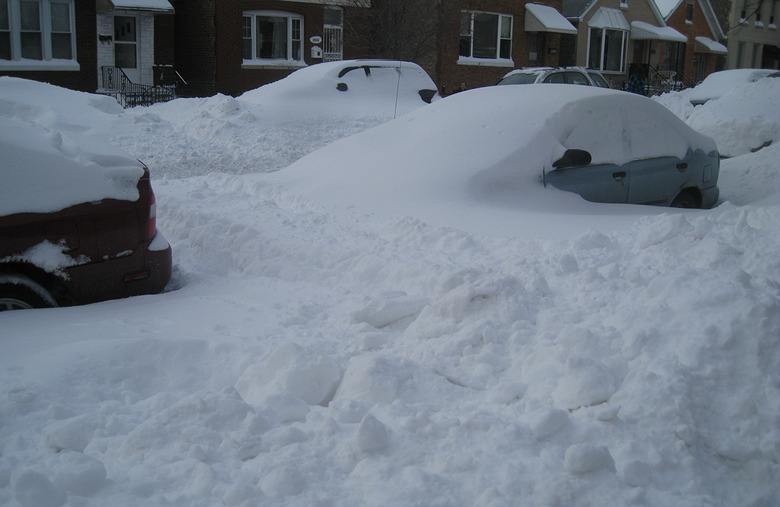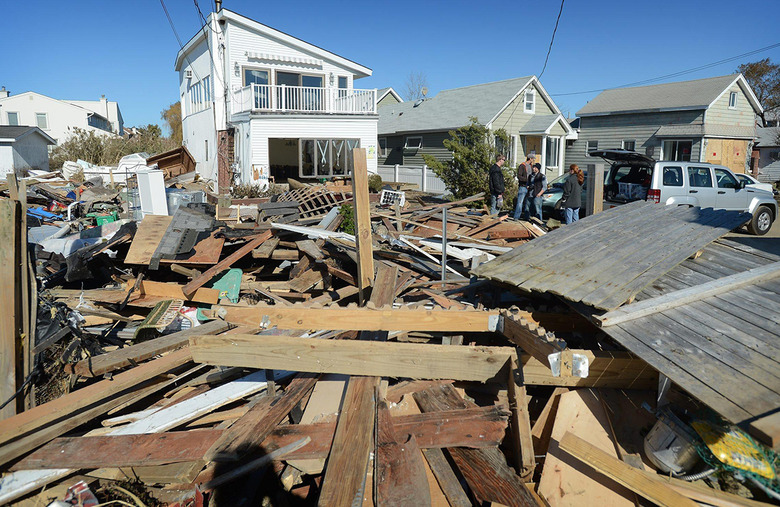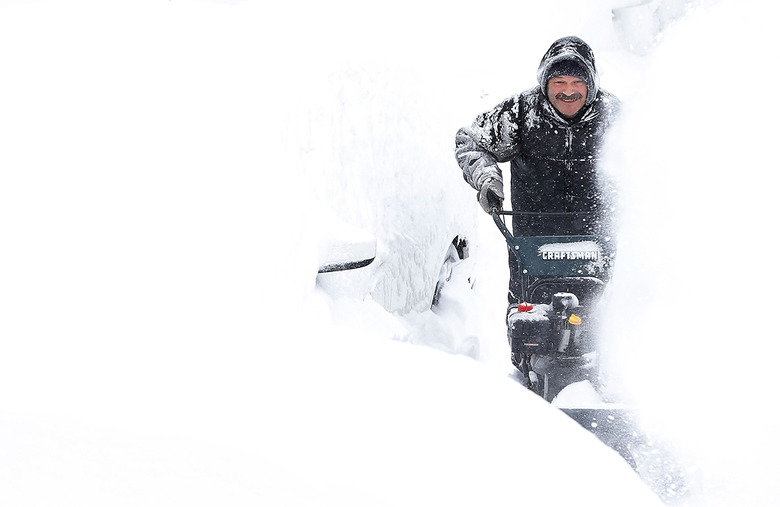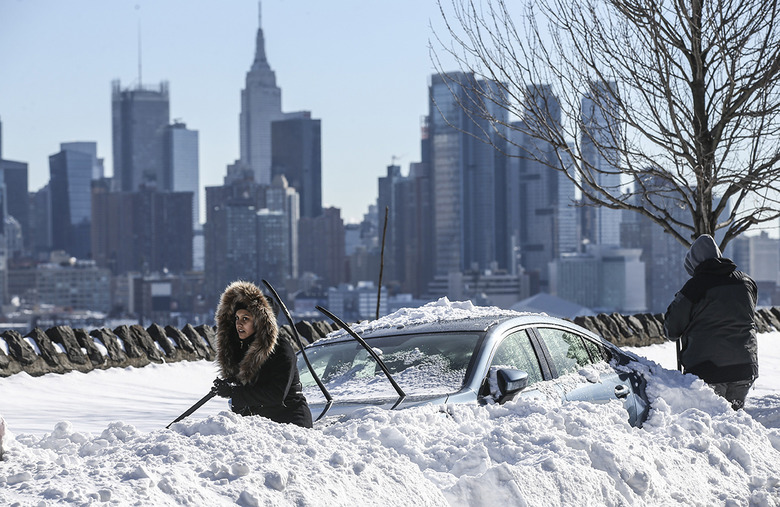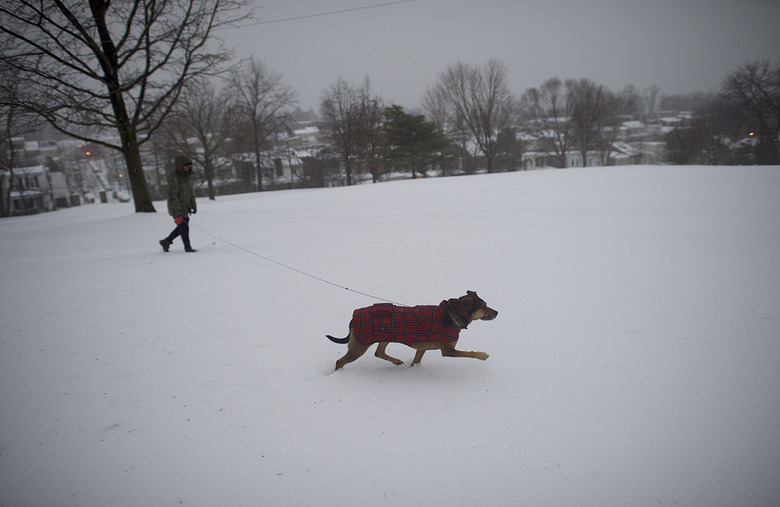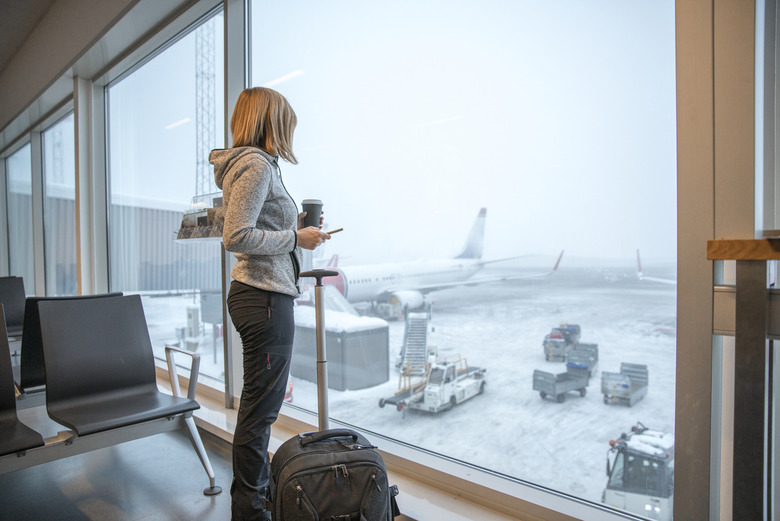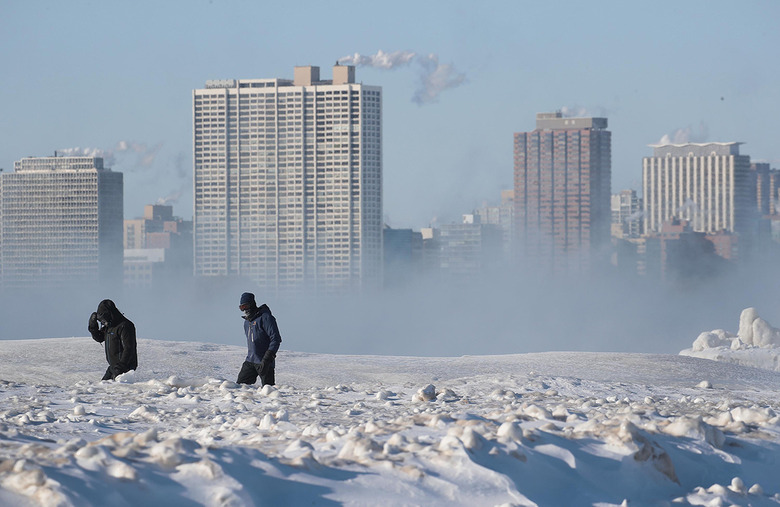The Most Devastating Winter Storms In US History
The United States spans multiple climates, and while some states are more infamous for experiencing extreme winter weather, almost every state in the Union has seen intense ice storms, blizzards and even hurricanes during the winter months. The National Weather Service has been tracking storms across the country since its initial inception in 1890. Since then, Americans have seen catastrophes that have dumped dizzying amounts of snow, knocked out power and telephone lines, and caused millions or billions of dollars in damage. Many of these frigid storms have even turned deadly. Between loss of life, property damage and historical impact, here are the worst winter storms to hit the United States over the past 100-plus years.
The Great Blizzard of 1888
Though this storm occurred before the National Weather Service was established, its devastation was still documented, and it remains one of the most severe recorded blizzards in the history of the United States. The storm swept through New Jersey, New York, Massachusetts, Rhode Island and Connecticut in March 1888, dumping up to 5 feet of snow. Winds of more than 45 mph produced snowdrifts as tall as 50 feet high that swallowed entire houses. People were stranded in their homes for up to a week, and the New York Stock Exchange was closed for two days. More than 400 people died, and the transportation gridlock following the storm inspired the creation of the first underground subway system in Boston.
The Children's Blizzard
Also known as the Schoolhouse Blizzard, the tragic Children's Blizzard of January 1888 caused the death of more than 200 people, most of them children. Happening a few months before the Great Blizzard later that year, this storm hit the Northwest Plains region of the United States, affecting areas that weren't even U.S states yet. The storm descended with no warning signs. The temperature plummeted 100 degrees in just 24 hours to minus 40 degrees F, and 60 mph winds caused 15-foot snowdrifts. Adults working in the fields and children walking home from school that day were caught in the blizzard.
St. Valentine's Day Blizzard of 1899
Also known as the Great Arctic Outbreak of 1899 and the Great Blizzard of 1899, the St. Valentine's Day Blizzard of 1899 blasted down from Canada across the Southern United States, making it all the way down to Cuba. Many Southern states experienced record-low temperatures. It was below zero in the Florida Panhandle, marking the only sub-zero temperature recorded in the state's history. The temperatures didn't only hit Florida hard. That year Mardi Gras in New Orleans saw revelers waiting for snow and ice to be cleared for the parade. The storm caused massive damage, killing crops and livestock as well as over 100 people.
Mataafa Storm of 1905
Also known as the Mataafa Blow or the Great Lakes Storm of 1905, the winter cyclone blew through the Great Lakes region with gale-force winds and heavy snow. The storm destroyed or damaged about 30 vessels and earned its name from causing the shipwreck of a steamer named Mataafa, which left nine crew members dead after dramatically splitting in half. In total, the storm killed 36 seamen, causing shipping losses of more than $3.5 million in 1905 dollars and led to water safety improvements on Lake Superior.
The White Hurricane of 1913
While it has several other monikers, the Great Lakes storm of 1913 is best known as the "White Hurricane." This winter storm combined blizzard conditions with hurricane-force winds up to 90 mph, creating 35-foot waves. It caused a dozen major shipwrecks and claimed the lives of an estimated 250 people, making it the largest inland maritime disaster in the U.S. to this day in terms of ships lost, according to the National Weather Service.
1920 North Dakota blizzard
One of the most legendary storms in North Dakota history struck in March 1920 and killed 34 people. Snowfall blocked the railroads and knocked out all telephone lines except one running from Fargo to Minneapolis. A young girl named Hazel Miner was memorialized in folk stories and songs after the storm. She died trying to save the lives of her younger brother and sister.
Knickerbocker Storm
While the nation's capital has endured plenty of nor'easters, one of the most devastating and most famous is the Knickerbocker Storm of 1922. Although it's been about 100 years, this winter storm is the stuff of legends. Washington, D.C., was blanketed with a record-breaking 28 inches of snow from Jan. 27-28. The massive amount of snow caused the roof of the capital's largest movie theater, the Knickerbocker, to collapse during a silent film screening. The cave-in killed 98 people and injured 130, making it one of the deadliest disasters in D.C.'s history and giving this winter storm its name.
1940 Armistice Day Blizzard
Armistice Day was a holiday celebrating the end of World War I on Nov. 11, 1918. But the date took on a different meaning for Midwesterners after 1940. That year, states from Kansas to Michigan were slammed by a blizzard that wasn't in the weather forecast. The day started out mild, so hundreds of people were out and about enjoying the holiday. However, temperatures plummeted and heavy rain quickly turned to heavy snow. Snowdrifts 20 feet high buried people, shut down roads and left trains stranded. The blizzard killed more than 150 people as well as livestock and crops, causing millions in damage.
Great Blizzard of 1947
The Northeast was buried by snowfall that started on Christmas Day, 1947. By the next day, the blizzard had dumped more than 26 inches of snow in some areas, burying cars and buses. Low temperatures that winter meant the snow remained on the ground until March of the next year. Many people were unprepared for the storm, which caused 77 fatalities.
Blizzard of 1949
The Blizzard of 1949 paralyzed the Great Plains for months, making it one of the worst winter storms in the region's history. Heavy snow and strong winds formed insurmountable snowdrifts that stranded households and towns. President Harry Truman declared the region a disaster zone, and food and medical supplies for isolated people and livestock had to be dropped in by airplanes. Forty people were killed across Colorado, Nebraska, South Dakota and Wyoming, and ranchers lost more than 150,000 cattle and sheep.
The Great Appalachian Storm of 1950
The Great Appalachian Storm blasted through the Northeastern U.S. over the Thanksgiving holiday in 1950. Rather than a typical nor'easter, this storm blew up from the southeast and started as a cyclone. It confusingly caused both record-high and record-low temperatures. Areas from Maine to Florida experienced heavy rains and coastal flooding, while Appalachia received as much as 57 inches of snow. The storm also blanketed Ohio in snow, but the annual Ohio State versus Michigan football game went on anyway, becoming a legendary winter sports game known as the Snow Bowl.
The Blizzard of 1958
A coastal storm blew heavy snow over the Mid-Atlantic through New England in February 1958, with some areas seeing 14-foot-tall walls of snow and snowdrifts that consumed entire houses. Helicopters rescued several people and air-dropped food for stranded people and cattle. The blizzard claimed 43 lives and caused $50 million in property damage.
Triple Wednesday Winter Storms
The Carolinas and Georgia had winter storms hit each Wednesday for three weeks in a row in March 1960. Each storm also affected other portions of the East Coast and Southeast, but the Carolinas got hit each time. The city of Charlotte received almost 20 inches in total, making it the Southern city's snowiest month and also snowiest year on record.
Ash Wednesday Storm of 1962
For three days in 1962, the most extreme nor'easter on record pounded the mid-Atlantic coast with winds as intense as a hurricane, up to 60 mph. The storm caused record flooding from England down to Florida and dumped large quantities of snow inland. Up to 42 inches of snow was measured in the Blue Ridge Mountains of western Virginia, and snow fell as far south as Alabama. The storm even ripped a 500-foot tanker ship in two in the Atlantic Ocean. Forty people were killed along the East Coast and the storm caused over $200 million in property damage in 1962 dollars.
Blizzard of 1966
The Blizzard of 1966 lasted for five days in January and dumped a maximum snowfall of more than 100 inches on Oswego, New York. The heavy snow was whipped by winds up to 100 mph, forming snowdrifts that enveloped entire two-story houses. Central New York saw some of the worst of the storm, and four residents in the area died of exposure.
The Great Midwest Blizzard
Also known as the Chicago Blizzard of 1967, the Great Midwest Blizzard struck Illinois and Indiana with a record 23 inches of snow. The worst blizzard in Chicago history, the storm stranded hundreds of buses and thousands of cars. Medical supplies had to be delivered to hospitals by helicopter, and 60 people were killed. The blizzard caused more than $150 million in business losses and, according to the National Weather Service, it caused the biggest disruption to commerce and transportation in Chicago since the 1987 Great Chicago Fire.
The Super Bowl Blizzard
Just days before football's biggest day of the year, a storm system descended in January 1975 that brought blizzard conditions and up to 2 feet of snow to the Midwest and an outbreak of 45 tornadoes to the Southeast. In the Midwest, the Super Bowl Blizzard set low pressure records with windchills down to minus 80 degrees. More than 100,000 farm animals as well as 58 people died from the cold conditions, while 12 people died due to tornadoes.
Cleveland Superbomb
While many Northeasterners might remember a blizzard in February 1978, Midwest residents recall the infamous storm of Jan. 26. That blizzard was nicknamed the Cleveland Superbomb. Meteorologists classified the storm as a "weather bomb" that was amplified to larger-than-life proportions when three low-pressure systems collided. The superbomb dumped up to 3 feet of snow on multiple Midwestern states, including Ohio, Indiana and Michigan. It left thousands of vehicles stranded, knocked out power for 400,000 and killed at least 70 people.
Blizzard of 1978
About two weeks after the Cleveland Superbomb, the Northeast was hit with a winter storm of its own, which is known as the Great New England Blizzard of 1978. This historic nor'easter slammed the New England region of the United States as well as New Jersey and the New York metropolitan area. Boston and Providence, Rhode Island, set records with almost 30 inches of snow each and winds whipped up to 110 mph. The storm killed about 100 people and did almost $2 billion adjusted in damage.
Megalopolitan Blizzard
The snowstorm of February 1983 crippled major cities from Washington, D.C., to New York City and set 24-hour snowfall records across Pennsylvania and Connecticut including Philadelphia, Harrisburg, Allentown and Hartford. The storm included dramatic thundersnow, a thunderstorm inside a snowstorm, and dropped 20 or more inches of snow. Virginia, Maryland and West Virginia saw over 30 inches.
The Perfect Storm
Also known as The No-Name Storm and the Halloween Gale/Storm, the storm of October 1991 is best known by the cinematic, simple nickname The Perfect Storm. The storm was actually a nor'easter that merged with Hurricane Grace before slamming into the Atlantic coast. The storm produced strong winds and flooding. Waves as high as 100 feet and winds up to 70 mph tragically capsized a ship called the Andrea Gail whose story was immortalized in the Hollywood movie "The Perfect Storm." The storm caused $168 million in damage and killed a dozen people, including six crewmembers of the Andrea Gail.
Halloween Storm of 1991
Folks across the Midwest had to rethink their Halloween plans when the Halloween Storm of 1991 blew in from Oct. 30-Nov. 3. This blizzard brought heavy snowfall and ice accumulation, including dropping almost 40 inches of snow on Duluth, Minnesota, making it the largest single snowstorm total in state history at the time. It caused more than $63 million in damage from fallen power lines alone and caused 22 deaths.
The Storm of the Century
The Superstorm of 1993 was also known as the Storm of the Century, and it's maintained that devastating title because of its impact and destruction. The eastern third of the country experienced record snowfall, up to 40 inches in some places, as well as deadly tornadoes. The storm caused billions in damage and is responsible for the largest interruption of air travel due to weather in United States history.
The ‘Blizzard' of 1996
Though not technically a blizzard, the "Blizzard" of 1996 was a nor'easter that bombarded the East Coast with three days of heavy, wet snow in early January. Maryland and Washington, D.C. were blanketed with up to 25 inches of snow, while areas in the mountains of Maryland and West Virginia received up to 4 feet. Philadelphia received 30 inches of snow, making this the worst snowstorm in the city's history. The storm killed 154 people. Afterward, temperatures rose quickly and the vast amounts of snow melted, resulting in massive flooding in the region.
April Fool's Day Blizzard of 1997
Kids, grandparents and even celebrities join in on the pranking fun on April Fool's Day, often attempting to dupe people with false information or stories. This holiday is part of the reason why people didn't take storm warnings as seriously during the April Fool's Day Blizzard of 1997. The Northeast U.S. from Maine to Maryland experienced rain, sleet and snow late in the season, so many people had already put away their winter tools. Parts of New England saw 50 to 70 mph wind gusts and up to 3 feet of snow. Thousands were stranded in their cars and nearly 700,000 people lost power.
Ice storm of 1998
A major storm system swept across the Eastern U.S. in January 1998, killing 16 people and causing an adjusted $2.2 billion in damages. Hundreds of homes were destroyed by flooding in North Carolina and Tennessee, while Maine, New York, New Hampshire and Vermont were pounded with freezing rain. The entire state of Maine was declared a disaster area as it was coated in ice as much as 3 inches thick and experienced power outages as long as 23 days after the storm hit.
Carolina Crusher
During an otherwise mild winter, a January 2000 blizzard swept along the East Coast. Although it dumped considerable snow on other states including Pennsylvania, Delaware, New Jersey and Virginia, North Carolina was the hardest hit. The storm was one of the most powerful winter storms on record for the Tar Heel State, earning it the nickname "the Carolina Crusher." Raleigh's airport was buried under a foot and a half of snow, and more than 300,000 people were without power in the Carolinas.
Double-Barrel Nor'easters
Unprecedented back-to-back winter nor'easters hit parts of the Northeast during the Christmas and New Year's holidays of 2002-03. The first storm hit Christmas Day and dumped up to 26 inches of snow, leaving some airport travelers stranded on the holiday. The area was then hit again on Jan. 3 with another storm. The weight of additional ice and snow snapped trees and power lines.
The Blizzard of 2005
The Midwest, Mid-Atlantic and New England were all affected by the three-day January Blizzard of 2005. Massachusetts was one of the hardest-hit states with whiteout conditions and more than 3 feet of snow. Hurricane-force winds also created snowdrifts up to 7 feet high.
Patriots' Day Nor'easter
The nor'easter that hit New England in April 2007 affected almost 96 million people across Connecticut, Maine, Massachusetts, New Hampshire, Rhode Island and Vermont. FEMA distributed more than $225 million to cover losses and damage caused by the storm's strong winds, tornadoes, heavy rain and snow, and storm surges. The storm earned the nickname Patriots' Day Nor'easter or Tax Day Nor'easter because it hit on tax day, April 15. The storm was devastating enough for the IRS to grant affected states' residents extensions on filing their taxes.
2009 North American Ice Storm
The deadly ice storm of 2009 left more than a million homes and businesses without power and 55 dead. The storm became the worst natural disaster in Kentucky history. It also caused a federal emergency declaration in Arkansas and Missouri and impacted parts of Oklahoma, Illinois, Indiana and West Virginia. The ice took down power lines and trees and made roads undrivable. It took weeks and millions of dollars for cleanup and repairs.
Snowmageddon 2010
The winter storm of Feb. 5-6, 2010, was referred to as "Snowmageddon" by residents in the Northeast and Mid-Atlantic regions. Even President Obama used the term to refer to the nasty blizzard after it effectively shut down Washington, D.C. Two blizzards actually hit back-to-back as another storm followed the first later in the month, compounding the impact of both. Elkridge, Maryland, experienced the highest snowfall at almost 40 inches. Six states declared national emergencies, and more than 40 people died as a result of the storms.
Groundhog Day Blizzard of 2011
"Snowpocalypse," "Snowzilla" or "Snowmageddon" — Midwesterners came up with all kinds of creative monikers for the Groundhog Day Blizzard of 2011. Over three days, the winter storm dumped more than 20 inches of snow in Wisconsin, Indiana and Illinois. The latter two states experienced winds higher than 60 mph, 10-foot snowdrifts, whiteout visibility and thundersnow. The blizzard was the third-largest snowstorm in Chicago history, stranded hundreds of cars overnight and caused 38 deaths across the U.S. in total.
Hurricane Sandy
Although Sandy was downgraded from a hurricane to a post-tropical cyclone before it made landfall in the United States in late October 2012, it still caused hurricane-level chaos and destruction. It affected 24 states from Maine to Florida along the East Coast and as far west as Wisconsin, though New York and New Jersey were the hardest hit. Sandy forced the New York Stock Exchange to close for two consecutive business days, which had not happened in more than a century since the winter storm of 1888. Altogether, Sandy claimed 159 lives and caused $73.5 billion in damage, according to the NOAA. It's the fourth-costliest weather disaster of all time in the U.S.
Winter Storm Nemo
Naming big winter storms caught on as a trend in the news in 2012, and one of the first big named storms after that was Winter Storm Nemo, which left a swath of heavy snow across the Midwest and Northeast. Connecticut, Maine, Massachusetts, New Hampshire and New York all got more than 30 inches of snow, while Hamden, Connecticut, saw the highest snowfall with 40 inches. Though not as severe, this nor'easter garnered comparisons to the Great Blizzard of 1888.
Winter Storm Jonas
In late January 2016, Winter Storm Jonas smashed previous snowfall records and became the fourth most powerful snowstorm to hit the Northeast in at least 60 years, according to the National Oceanic and Atmospheric Administration. The blizzard affected more than 100 million people, knocking out power, causing crashes and canceling flights. It dumped a high of almost 42 inches of snow in West Virginia. States as far as Louisiana and Florida saw snow, and 14 different states experienced at least a foot of snow. Estimates put Jonas' economic impact at $850 million.
Pi Day Blizzard
March 14 is known as Pi Day because the date, 3/14, contains the first three digits of the mathematical constant pi. In 2017, this whimsical holiday became associated with a winter storm that dumped more than 3.14 feet of snow on northeastern Pennsylvania, northwestern New Jersey and parts of New England. Wind gusts up to 50 mph resulted in whiteout, blizzard-like conditions and sizable snowdrifts.
Winter Storm Xanto
The effects of the blizzard-like Winter Storm Xanto spanned from the Gulf Coast to the Great Lakes in mid-April 2018. The storm caused heavy snow, rain, hail and winds more than 50 mph. Hundreds of flights were canceled and several highways were closed across the Midwest. Amherst, Wisconsin, saw 33 inches of snow and drifts up to 6 feet high. The storm system also caused a tornado in Arkansas and pelted Texas with hail the size of chicken eggs.
2019 Polar Vortex
An Arctic cold front known as a "polar vortex" swept across the Midwestern U.S. in January 2019. Basically a frigid cyclone, the polar vortex set all-time low temperature records and caused windchills as low as 60 degrees below zero. At these temperatures, frostbite could affect exposed skin in five minutes or less. When it comes to frostbite, hypothermia and more, make sure you don't believe common cold-weather myths.
